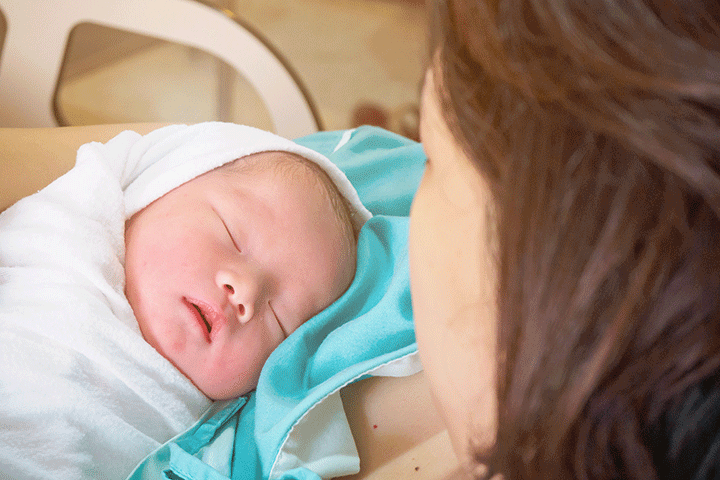Pregnancy Care
Preeclampsia: Risk Factors, Symptoms, & Treatment

Preeclampsia is a complication of pregnancy that manifests as persistently high blood pressure in expecting mothers, usually after 20 weeks of pregnancy. This condition usually resolves within 48 hours of delivery, although it could also only occur six weeks postpartum.
Preeclampsia is a relatively rare condition that can be difficult to deal with. Symptoms of mild preeclampsia are not always apparent, and could go undetected for weeks or months. However if left untreated, preeclampsia can lead to serious complications in both the mother and child.
Statistics show that preeclampsia affects approximately 3.6% of pregnancies in Singapore.
How Can Preeclampsia Affect The baby?
Premature Birth
Preeclampsia is among the leading causes of premature births, responsible for up to 20% of preterm births worldwide. The World Health Organisation defines preterm birth as the delivery of babies before 37 weeks of pregnancy.
Possible complications of babies being born prematurely vary widely, and could lead to lifelong conditions such as cerebral palsy, learning disabilities, vision loss, and hearing problems.
Intrauterine Growth Restriction (IUGR)
By body mechanisms that are unclear, mothers with preeclampsia have their blood vessels constrict abnormally, leading to high blood pressure. Such blood vessel constriction can restrict the supply of food and oxygen to your baby through the placenta, leading to malnourishment and low birth weight in the baby.
Most babies catch up on their growth in terms of weight and height, and those with mild IUGR may not face long term health problems. In more severe cases, the impact of IUGR on the baby’s health and development could be significant.
Low birth weight in babies due to IUGR or premature births has been linked to neurodevelopmental delay, increased rates of cardiovascular disease and noninsulin-dependent diabetes in adult life.
IUGR can be detected by your obstetrician through ultrasound.
Risk Factors For Preeclampsia
The various risk factors associated with preeclampsia include:
- First Pregnancy: Chances of developing preeclampsia during a woman’s first pregnancy are significantly higher than subsequent ones.
- Multiple Gestation: Higher risk among women carrying more than one baby
- Previous History Of Preeclampsia: Higher risk among women who developed preeclampsia during a previous pregnancy
- Family History Of Preeclampsia: Higher risk among women whose mother or sister had preeclampsia
- Age: Higher risk among women who are younger than 20 years or older than 40 years.
- Obesity: Higher risk among women with a BMI 30 or higher
- Existing Medical Conditions: Chronic hypertension, diabetes, kidney diseases
- New Paternity: A change in paternity after a previous pregnancy increases risk of preeclampsia
Latest Articles
How Are Abdominal Hernias Treated?
What to Expect from Colorectal Surgery
How to Treat Breast Inflammatory Conditions
Gynaecomastia: Understanding Male Breast Cancer
Symptoms Of Preeclampsia
In mild cases, preeclampsia can develop without any symptoms. High blood pressure may develop slowly, and you may fail to notice its existence until it becomes severe. This is the primary reason why monitoring your blood pressure is a critical component of prenatal care.
Moreover, if preeclampsia is not treated effectively and in time, it can lead to serious complications for the mother such as liver or renal failure and future cardiovascular issues.
Some of the common signs and symptoms of preeclampsia include:
High Blood Pressure
The most common symptom of preeclampsia is high blood pressure. Sometimes, it may be the only symptom. Your blood pressure may be minimally elevated or can be dangerously high. The degree of blood pressure elevation tends to vary from one woman to another.
Typically, when your blood pressure is 140/90 mmHg or greater, you may have developed preeclampsia. However, the reading must be taken more than once with a minimum interval of six hours between the readings.
Swelling
A certain amount of swelling may be normal during pregnancy. However, you should be concerned if you notice significant swelling on your feet, hands, or face. The swelling occurs as a result of the accumulation of fluids in your body, and it is linked to preeclampsia.
Sudden Weight Gain
Gaining more than three pounds in a week or less may be a sign of this disorder. Damaged blood vessels usually allow a lot of water to leak into your body tissues and not pass through your kidneys to be excreted, which leads to unexplained weight gain.
Presence Of Protein In Your Urine
The presence of protein in urine is often referred to as proteinuria and it is another sign of preeclampsia. Proteinuria occurs when increased blood pressure interferes with the filtering role of your kidney causing proteins to spill into your urine. A dipstick test of your urine during a prenatal checkup can establish the presence of proteins in your urine.
Headaches
Dull or severe headaches that do not go away should be a cause for concern. If you have tried taking painkillers without relief and you have become sensitive to light as well, make sure that you see your obstetrician and explain to him/her how you are feeling.
Nausea/Vomiting
Your morning sickness should disappear after the first trimester. Sudden reappearance of nausea and vomiting after 20 weeks of pregnancy is linked to preeclampsia.
Abdominal/Shoulder Pain
Abdominal pain occurs under the ribs on the right side of your body, whereas shoulder pain usually radiates from the liver under your right ribs. Do not confuse abdominal pain with heartburn, flu, gallbladder problems, or pain from your baby kicking.
Abdominal and shoulder pains are more acute and specific. Sometimes, shoulder pain can feel like someone is pinching you along your neck or bra strap and can make you feel pain when you lie on your right side.
Shortness Of Breath/Anxiety
A heightened sense of anxiety, racing pulse, shortness of breath, and state of mental confusion can be signs of preeclampsia. These symptoms could be an indication of elevated blood pressure or fluid collecting up in your lungs.
Changes In Your Vision
This is a sign of severe preeclampsia. Blurred vision, inability to tolerate bright light and sensations of flashing lights may be an indication of the swelling of the brain that is linked to preeclampsia.
Preeclampsia Treatment Options
Delivery of the baby is most effective in the treatment of preeclampsia. Unfortunately, giving birth may not be the best option for your baby if preeclampsia is diagnosed too early in your pregnancy. In such a case, your doctor may recommend an alternative treatment method that may help to prolong your pregnancy for a reasonable amount of time for the baby’s health and development.
Under the monitor of an experienced obstetrician, the health of the mother has to be constantly balanced with the health of the developing baby.
Alternative treatment options include:
Medication To Lower Your Blood Pressure
Anti-hypertensives may be used to lower your blood pressure if it is dangerously high. There are many different types of antihypertensives, but some of them may not be safe for you during pregnancy. Your obstetrician will assess your condition to determine whether it is safe to use anti-hypertensive drug to lower your blood pressure.
Anticonvulsant Medications
If you are diagnosed with severe preeclampsia, your obstetrician may recommend an anticonvulsant such as magnesium sulfate to prevent seizures.
Corticosteroids
Your obstetrician may prescribe corticosteroid medications to temporarily improve your platelet and liver function to prolong your pregnancy. Corticosteroids can also help your unborn baby’s lungs mature faster, which is a critical step in preparing a preterm baby for life outside your womb.
Bed Rest
If you are far away from your expected due date and your symptoms are mild; your doctor may advise you to have enough bed rest. Resting helps to lower your blood pressure, which increases blood flow to the placenta. In severe cases, you may be hospitalised and monitored closely.
Simple Lifestyle Choices That Can Help You Prevent Preeclampsia
While there is no way to fully prevent preeclampsia from developing, there are several things that you can do to lower your risk. Simple tweaks to your lifestyle choices can go a long way in ensuring that you maintain a healthy pregnancy and deliver safely. Here are a few things that you can do to prevent preeclampsia:
Maintain A Healthy Weight
Doctors stress the importance of getting yourself prepared for pregnancy by ensuring that you achieve a healthy body weight. Eat a well-balanced diet and work on getting into good physical shape before you conceive. Strive to maintain a body mass index of between 19 and 25.
Use Little Or No Added Salt In Your Food
Lowering your salt intake while pregnant can go a long way in ensuring that you do not develop preeclampsia. Consuming too much salt can raise the amount of sodium in your bloodstream and limit your kidney’s ability to get rid of excess water from your body. This can lead to high blood pressure from the extra fluid in your body tissues.
Get Regular Exercise
Some of the profound benefits of regular exercise during pregnancy include reduced inflammation and maintaining a healthy body weight. Regular exercise also reduces the risk of hypertension. Therefore, make sure that you get moderate exercise to maintain a healthy pregnancy and lower your risk of developing preeclampsia.
Stay Hydrated
Doctors recommend drinking between six to eight glasses of water every day and avoid caffeinated beverages. Drinking plenty of water can prevent swelling and help keep your blood pressure low.
Routine Check-Ups With Your Obstetrician
Book an appointment with your obstetrician as soon as you realize that you are pregnant to check for any risk factors that can make you develop preeclampsia. Keep in mind that the earlier you learn about your condition, the higher the chances of preventing pregnancy-related complications such as preeclampsia.
WHO WE ARE
About SOG Health Pte. Ltd.
Established in 2011, SOG Health Pte. Ltd. (“SOG”) is a leading healthcare service provider dedicated to delivering holistic health and wellness services to the modern family.
With a long and established track record in Singapore providing Obstetrics and Gynaecology (“O&G”) services such as pre-pregnancy counselling, delivery, pregnancy and post-delivery care, the Group has since further expanded its spectrum of healthcare services to include Paediatrics, Dermatology, and Cancer-related General Surgery (Colorectal, Breast & Thyroid).
The Group’s clinics, under its four operating segments of O&G, Paediatrics, Oncology and Dermatology, are strategically located throughout Singapore to provide easy access to its patients.
- Obstetrics
- Gynaecology
- GynaeOncology
- Breast, Thyroid & General Surgery
- Colorectal, Endoscopy & General Surgery
- Dermatology
- Paediatrics
Consult With A Specialist From SOG
Visit one of our specialists today to learn more about your health!
Recommended Obstetricians
Book An Appointment
Fill up this form and our clinic will get back to you shortly.
For general enquiries, please click here.








